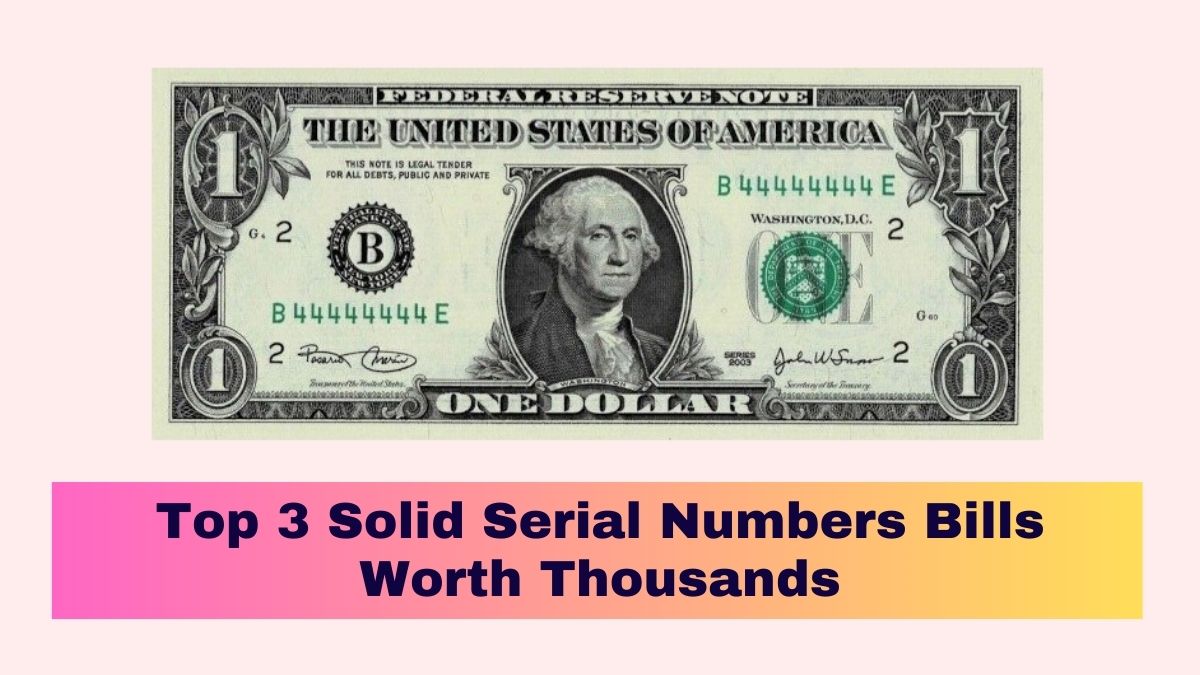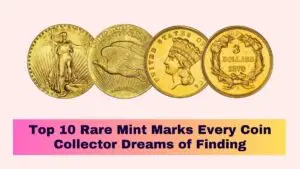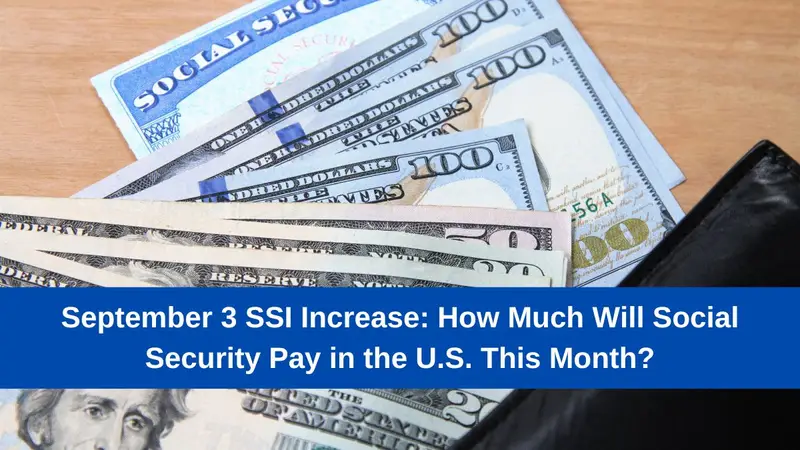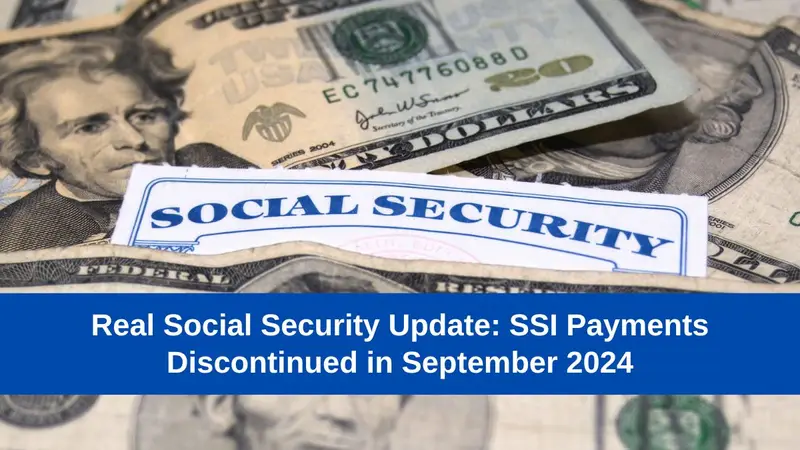Collecting rare currency is a fascinating hobby that can also be highly profitable. One of the most sought-after categories of collectible bills includes those with “solid serial numbers.”
These are bills where every digit in the serial number is identical, such as 88888888 or 55555555. They are extremely rare, and collectors are willing to pay thousands of dollars for them.
In this article, we’ll explore the top three solid serial number bills that could be hiding in your wallet and worth thousands of dollars.
What Are Solid Serial Number Bills?
Solid serial numbers are banknotes where all the digits are the same, such as 11111111 or 99999999. These bills are prized for their rarity and aesthetic appeal, making them a hot item among collectors.
Only a small fraction of all printed bills feature these unique serial numbers, which greatly enhances their value.
How to Identify Solid Serial Number Bills

Identifying a solid serial number bill is simple:
- Look at the serial number: Check the upper right and lower left corners of your bill. Solid serial numbers will have the same digit repeated across all eight spaces.
- Examine the condition: Ensure the bill is in good condition. The value of solid serial number bills increases dramatically if the bill is uncirculated or in mint condition.
- Check the series: Older series tend to be more valuable, so it’s essential to verify the series year printed on the bill.
Top Three Solid Serial Number Bills That are Currently Worth Thousands
1. $1 Bill with Solid Serial Numbers
A $1 bill might seem insignificant at face value, but with a solid serial number, it could be worth significantly more. The solid number format on a $1 bill, such as 33333333, is extremely rare.
According to recent auction data, solid serial number $1 bills can fetch between $2,000 and $5,000 depending on their condition and year of issuance.
Collectors value these bills because they are more commonly found in older series, making them harder to come by today.
2. $5 Bill with Solid Serial Numbers
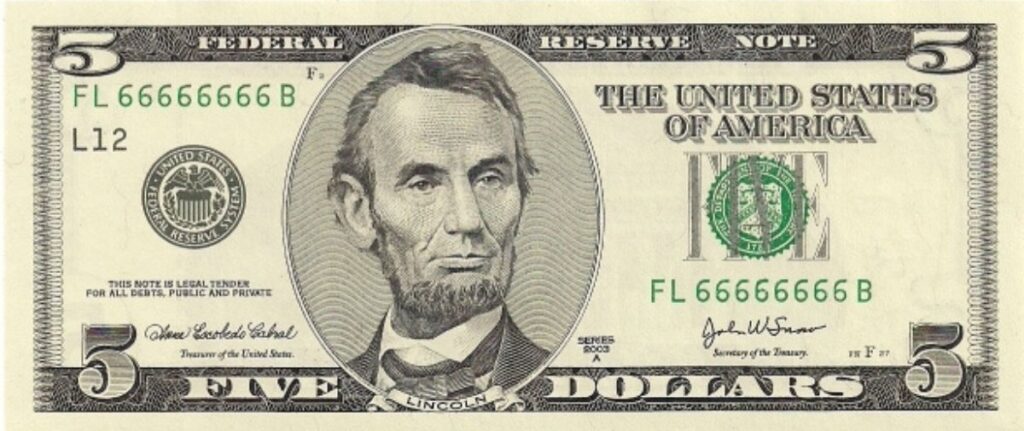
Similarly, a $5 bill with a solid serial number can be worth a small fortune. For example, a $5 bill with the serial number 88888888 sold for $2,040 at a 2021 auction.
These bills are scarce, and their value increases significantly if they are in uncirculated condition.
A well-preserved $5 bill with a solid serial number could sell for anywhere between $1,500 and $3,000, depending on market demand at the time of sale.
3. $100 Bill with Solid Serial Numbers
The higher the denomination, the more valuable the bill. Solid serial number $100 bills are exceedingly rare and can command prices between $4,000 and $8,000 at auction.
For example, a $100 bill with the serial number 99999999 is highly sought after by collectors.
The higher face value of the bill, combined with its rare serial number, makes these $100 notes a prized possession in the currency-collecting community.
Solid Serial Number Bill Values
| Bill Denomination | Example Serial Number | Estimated Value (USD) |
|---|---|---|
| $1 | 33333333 | $2,000 – $5,000 |
| $5 | 88888888 | $1,500 – $3,000 |
| $100 | 99999999 | $4,000 – $8,000 |
Factors Affecting Value
Several factors contribute to the overall value of a solid serial number bill:
- Condition: Bills in pristine, uncirculated condition will always fetch higher prices.
- Series: Older bills with solid serial numbers, particularly from series printed decades ago, tend to be more valuable.
- Demand: The current market demand for rare currency affects how much a collector is willing to pay. When demand is high, prices can skyrocket.
Conclusion
Solid serial numbers bills are among the most valuable and rare types of currency in circulation today. Whether you find one in your wallet or purchase one from a collector, these bills can be worth thousands of dollars.
By understanding the value of these unique serial numbers and knowing where to sell them, you could make a significant profit from what seems like an ordinary bill.
Always check your bills for unique serial numbers—you never know what treasure you might be holding
FAQs
1. How can I check if my bill has a valuable serial number?
Check the serial number located on the upper right and lower left corners of the bill. Solid serial numbers consist of identical digits (e.g., 77777777). There are also websites and apps where you can input the serial number to determine its potential value.
2. Why are solid serial number bills so valuable?
Solid serial number bills are rare and aesthetically unique, making them highly desirable to collectors. Their rarity increases their market value significantly.
3. Can any denomination of bill have a valuable solid serial number?
Yes, solid serial numbers can appear on any denomination of U.S. currency. However, higher denominations, such as $100 bills, tend to fetch higher prices due to their higher face value combined with rarity.
4. Where can I sell a solid serial number bill?
You can sell rare bills through auction houses that specialize in currency, or through online marketplaces that cater to collectors. Some collectors also sell directly to currency dealers.
5. What is the most expensive solid serial number bill ever sold?
The most expensive solid serial number bills can reach values of up to $20,000, especially if they are older bills in uncirculated condition with popular numbers like 99999999.
References
- CoinValueChecker.com. “Paper Money Value by Serial Numbers.”
- USCurrencyAuctions.com. “Fancy Serial Number Price Guide.”
- GOBankingRates.com. “$5 Bills with Unique Serial Numbers Can Be Worth Thousands.”
- NBC San Diego. “Rare $5 Bills Are Worth Thousands – Here’s How to Find Them.”
